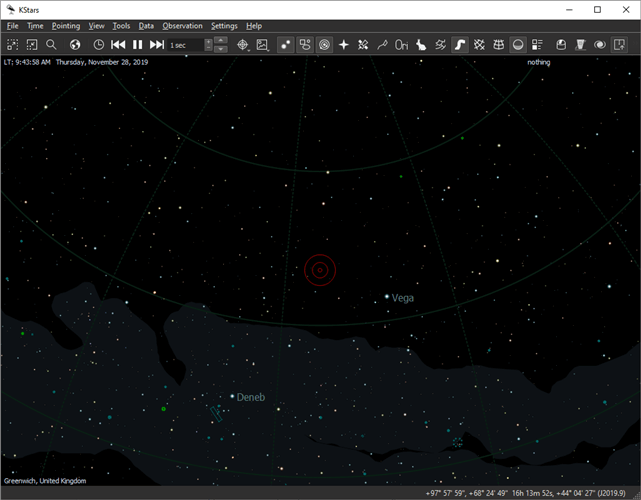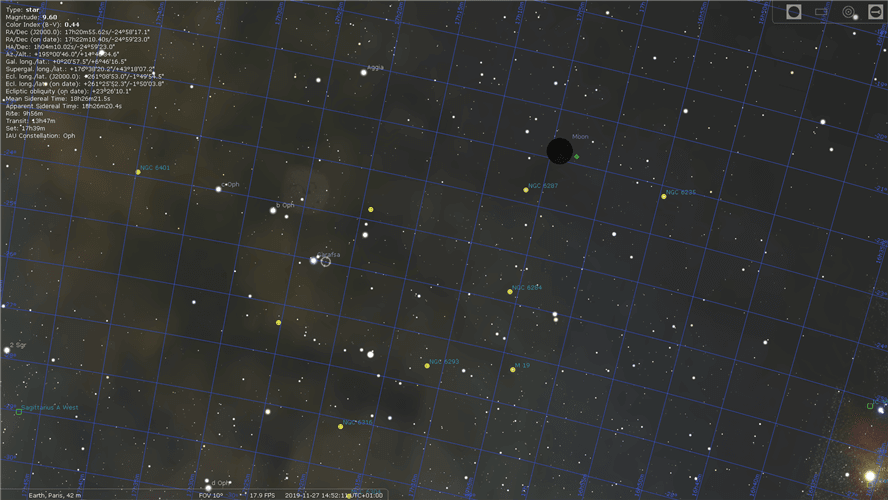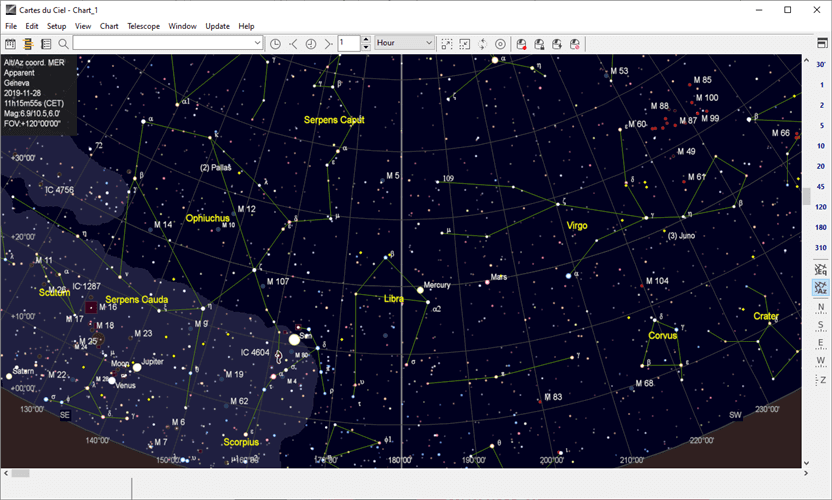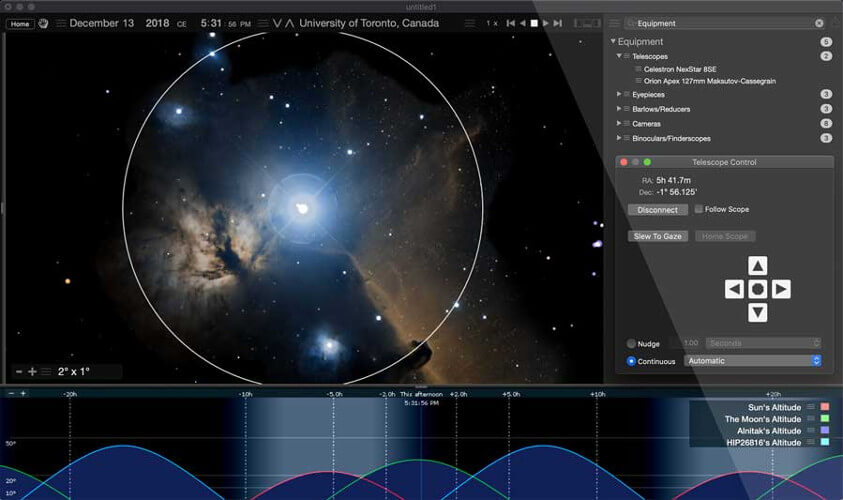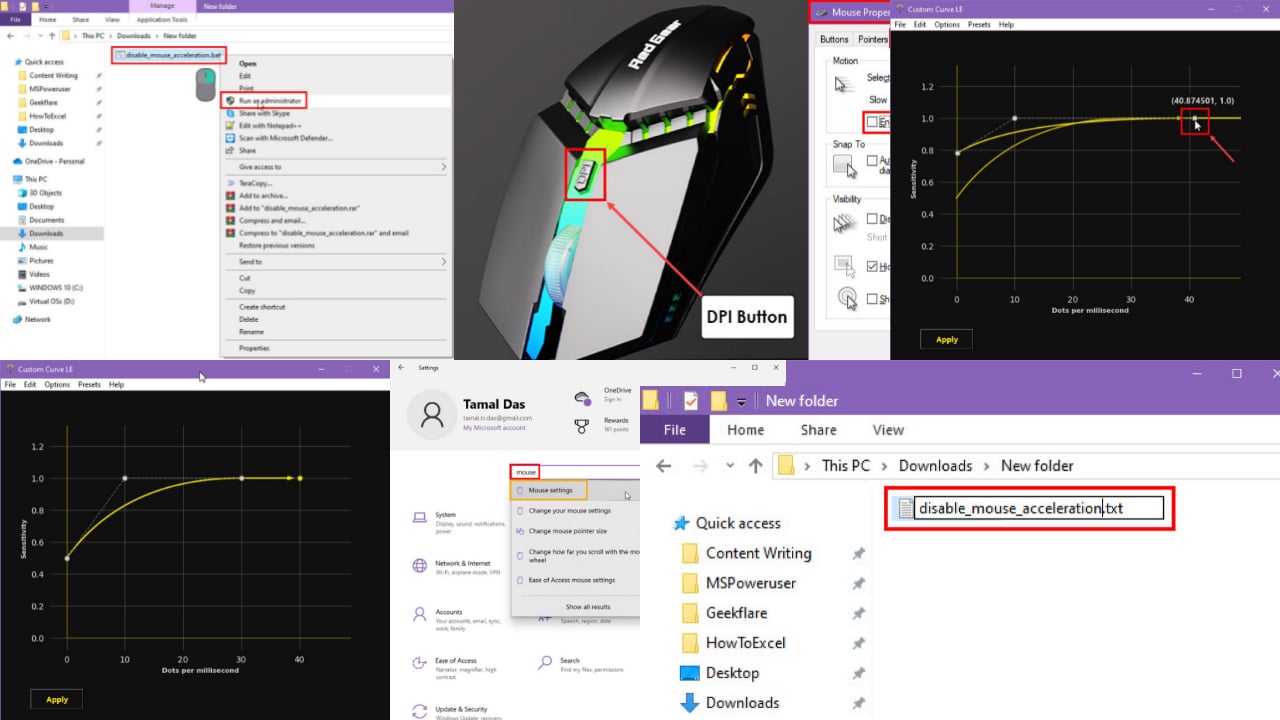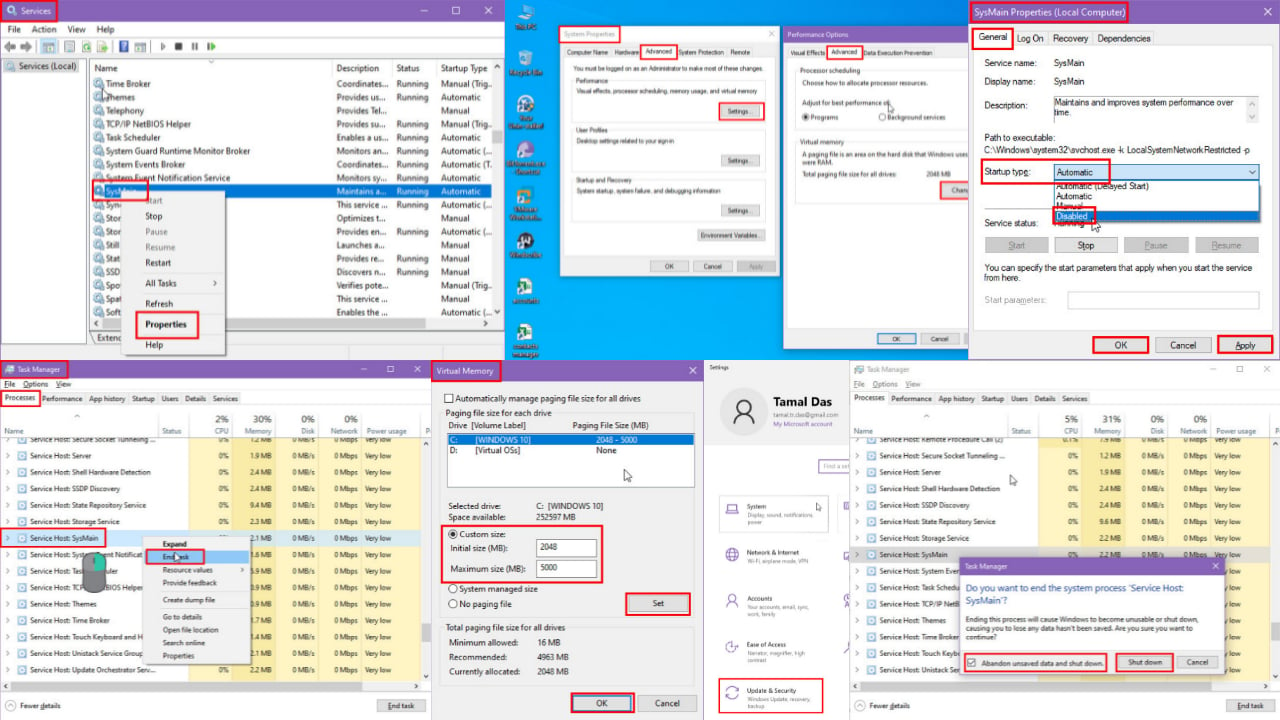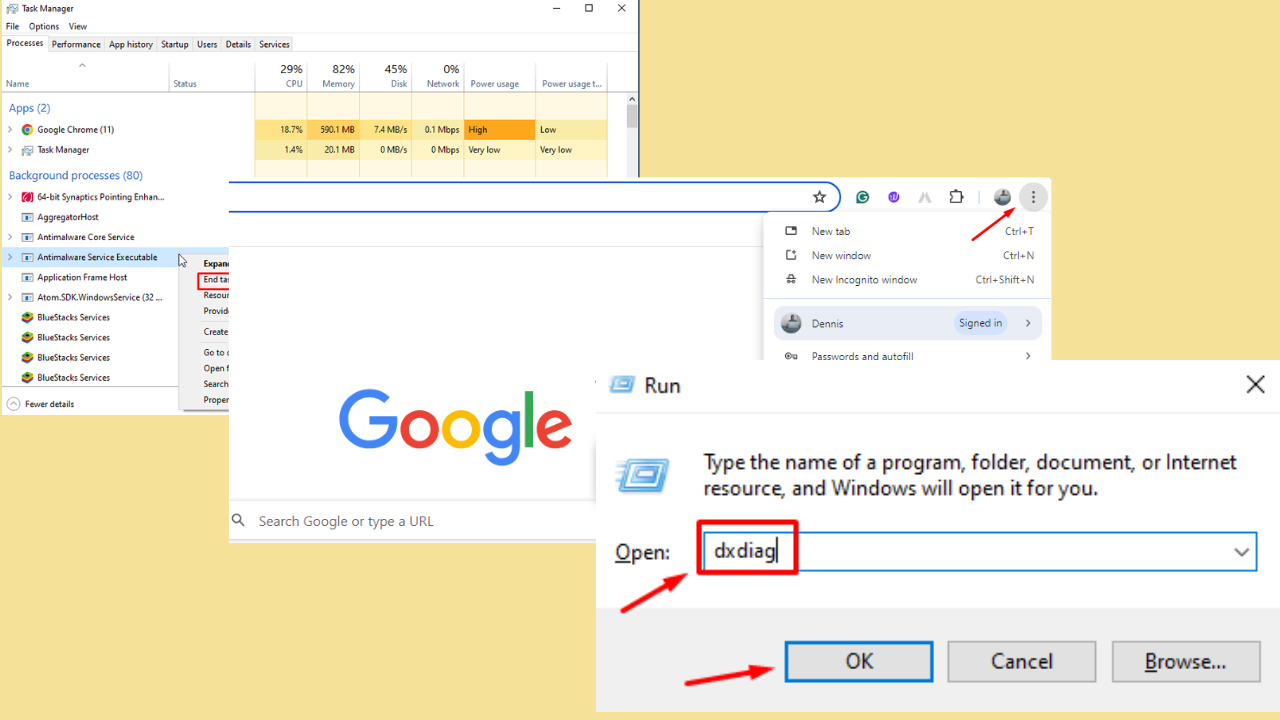Astronomy Software for Windows 10 PC: 5 Professional Tools
6 min. read
Updated on
Read our disclosure page to find out how can you help Windows Report sustain the editorial team Read more

What professional astronomy software tools should I get?
C2A
C2A (Computer Aided Astronomy) is a free planetarium software solution for Windows computers, which can be used in professional astronomy. Featuring an intuitive graphical interface, it gives you the possibility to create detailed views of stars.
It has a database of stars from the Smithsonian Astrophysical Observatory (SAO), Washington Double Star (WDS), Gliese Catalogue of Nearby Stars, Hipparcos, and other sources. You can create your own catalogs, too.
Besides zooming in and out, you can get information on any selected star, adjust visibility settings, create an observation planner, and put together a scheduler. Telescope control is supported as well.
C2A provides you with multiple tools. For instance, you can set solar system trajectories, filter asteroids and comets, view sunrise and sunset times, check out the moon phases, investigate planet positions, or set field markers.
As far as images are concerned, it’s possible to make adjustments, perform analysis, use a digitized sky survey, browse an atlas of object pictures, and change background images.
Pros:
- Free
- Intuitive graphical interface
- Lets you calculate the trajectories of celestial objects
Cons:
- The interface may seem cluttered for some
KStars
KStars is a free and open-source astronomy software tool that can be used by professionals to observe the night sky from Earth’s perspective. It’s also possible to switch to day mode by controlling time settings.
Delivered in an easy-to-use graphical interface, KStars simulates a space environment for investigating 8 planets, up to 100 million stars, approximately 13,000 deep-sky objects, asteroids, the sun and moon, comets, satellites, and supernovae.
Thanks to adjustable time settings, you can carefully observe elaborate celestial events which took a long time to unfold. You can set coordinates manually, quickly locate objects with a search function, and enable tracking mode.
Additional tools are available to help you convert coordinates, calculate time, plan solar system conjunctions, or predict eclipses. You can check out a sky calendar, generate graphs for objects by altitude and time, and run a solar system simulator with XPlanet, if you choose to install this free third-party tool.
Depending on what compatible equipment you have and wish to use, it’s possible to integrate a telescope, eyepiece, lens, or filter with the telescope control software.
Pros:
- Free and open-sourced
- Simulates 8 planets, up to 100 million stars, approximately 13,000 deep-sky objects
Cons:
- May cause issue son old PC systems
Stellarium
Stellarium is a top choice among many professionals when it comes to astronomy software. Just like the previous listings, it’s free and open-source, facilitating a 3D simulator for planets, stars, and other celestial objects.
You can explore numerous stars, deep-sky objects, constellations, nebulae, novae, supernovae, the Milky Way, meteor showers, and others using a powerful zoom. These are accompanied by photo-realistic images and various effects, like star twinkling.
Plugins are supported, which means that you can add extra functionality to Stellarium. For example, you can connect your telescope and configure settings, simulate ocular mode, or load new solar system objects, artificial satellites, and constellation pictures.
There are many professional approaches to this astronomy software solution. For instance, you can install the VirGo extension to view and analyze data from the archive of ESO.
Pros:
- Free and open-sourced
- Supports plugins
Cons:
- May need a tutorial to learn how to use it efficiently
Cartes du Ciel (Sky Charts)
Cartes du Ciel is a free and open-source astronomy software tool that boasts a wide range of options and configuration settings for professionals.
It renders a sky map that allows you to investigate more than 9,000 stars and 10,600 deep-sky objects, including planets, comets, asteroids, nebulae, constellations, and solar systems.
The catalog can be enriched by downloading additional resources. And you can use an advanced search tool to quickly track down objects. The orbital motion of solar system objects can be plotted after configuring simulation settings.
It’s possible to save images and record animations to file, change the coordinates and chart mode, select the types of objects to display by applying catalog filters, toggle night vision, set a different field of vision, as well as increase or decrease the number of stars and deep-sky objects.
Telescopes are supported by Cartes du Ciel, which can be connected to your device using INDI, ASCOM or manual mount drivers. Aside from customizing telescope preferences, you can synchronize data and activate slewing or tracking mode.
Pros:
- Holds detailed information about each known celestial object
- Supports telescopes
- Can be used to plot the orbital motion of celestial objects
Cons:
- Celestial objects only have text associated with them, no pictures
Best telescope control software
If you are looking for the best telescope control software solution, we recommend using Starry Night. It comes in multiple editions for astronomers and enthusiasts who want to use their telescope.
In addition to telescope control features, you can use a large database to explore deep-sky objects, listen to audio descriptions, make time adjustments, and travel to other stars with one click.
Starry Night has a user-friendly graphical interface that lets you study suns and exoplanets in 3D. And, by using your keyboard or plugging your joystick into the computer, you can fly an intergalactic spaceship.
It’s possible to toggle night vision mode, configure coordinate settings, inspect data about asteroids, comets, and satellites, create and save video animations, as well as take screenshots and save images to file.
The telescope control software tool includes a light pollution simulator that displays only the brightest stars, along with a database that indicates the positions of major meteor showers.
Those are just part of the feature-set available in the Starry Night software. You can explore many other professional astronomy options and configuration settings to help you observe the night sky and analyze various celestial objects.
Pros:
- Comes in multiple editions for astronomers and amateurs alike
- Expansive database of celestial objects
- Includes a light pollution simulator
- Stylish interface
- Simulates night-vision mode
Cons:
The price tag
Conclusion on professional astronomy software
Taking everything into account, professionals can turn to the C2A, KStars, Stellarium, Cartes du Ciel, or Starry Night software solutions for various astronomy projects.
These applications come in handy for scientific research, data analysis, and telescope maintenance.


